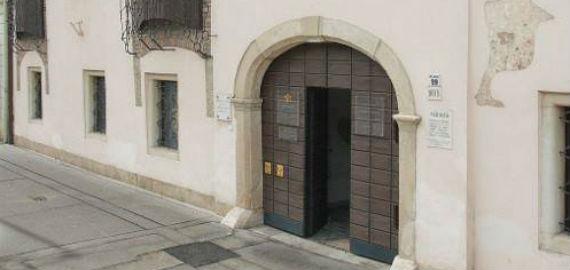2024. November 22. Friday
Hanság Museum - Cselley House - Mosonmagyaróvár
 |
Address: 9200, Mosonmagyaróvár Fő út 19.
Phone number: (96) 212-094
E-mail: hansagi@hansagimuzeum.hu
|
Museum tickets, service costs:
|
Individual ticket for adults
|
800 HUF
|
|
|
Individual ticket for adults
|
300 HUF
|
|
|
Group ticket for adults
|
600 HUF
|
|
|
Individual ticket for students
|
400 HUF
|
|
|
Individual ticket for students
|
150 HUF
|
|
|
Group ticket for students
|
300 HUF
|
|
|
Individual ticket for pensioners
|
400 HUF
|
|
|
Individual ticket for pensioners
|
300 HUF
|
|
|
Individual ticket for pensioners
|
150 HUF
|
|
|
Individual combined ticket for adults
|
1400 HUF
|
|
|
Individual combined ticket for students
|
700 HUF
|
|
|
Individual combined ticket for pensioners
|
700 HUF
|
The Cselley-house hosts an applied arts exhibition hand in hand with the Gyurkovich collection. The visitors may see a bed of a noble family from Upper Hungary among furniture from the 17-18th century, as well as a late Renaissance trousseau bed. The high quality of furniture of the Baroque is presented via richly ornamented desks, chests and wardrobes.
The ceiling holds a reconstructed cassette structure. The oil paintings with religions topic on the walls were made by artists from Austria. The watch from the era of Mary Teresa is of special interest, as well as a mirror with golden frame once belonging to an aristocratic family.
The exhibition also shows furniture from the first part of the 19th and several other objects made in empire and biedermeier style mainly in Bratislava, Mosonmagyaróvár and Vienna.
Sofas, chairs and tables are placed among the showcases that hold ceramics and contemporary material.
Among the biedermeier portrait a few landscapes from the 1840's from Szále János are hanging on the walls.
The ceiling holds a reconstructed cassette structure. The oil paintings with religions topic on the walls were made by artists from Austria. The watch from the era of Mary Teresa is of special interest, as well as a mirror with golden frame once belonging to an aristocratic family.
The exhibition also shows furniture from the first part of the 19th and several other objects made in empire and biedermeier style mainly in Bratislava, Mosonmagyaróvár and Vienna.
Sofas, chairs and tables are placed among the showcases that hold ceramics and contemporary material.
Among the biedermeier portrait a few landscapes from the 1840's from Szále János are hanging on the walls.
|
Related activities
|
||